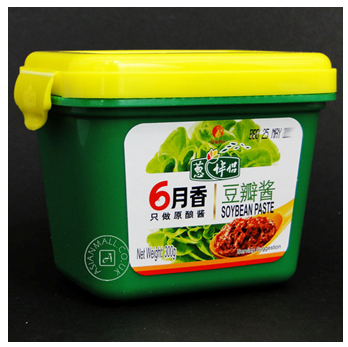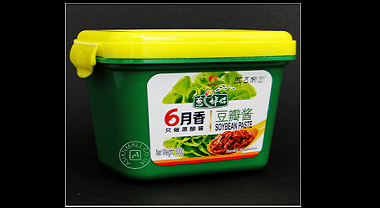The Case of Counterfeiting, Dilution and Trade Dress Infringement
The Plaintiff is Shandong Sinho, a Limited Liability company organized under the laws of China, dealing in speciality Chinese foods such as bean curd and soybean paste. The plaintiff filed the claims for trademark counterfeiting, trademark infringement, trademark dilution and trade dress infringement, false designation of origin, unfair competition and deceptive practices against the Defendants, May Flower Int’s Inc. for the trademark and trade dress CONG BAN LV at the United States District Court Eastern District Of New York, which the ptradlaintiff alleged that the defendants infringed and used a similar and deceptive mark to confuse the customers and disrupt the business of the plaintiff, all the while maintaining that the infringer is someone else and that the defendants are investigating on the plaintiff’s behalf.

One of the grounds of the case was that the Plaintiff has given an exclusive trademark license assignment to the Defendants. The whole contention of the Plaintiffs was that since the beginning, the plaintiffs have been saying that this is an exclusive assignment of the trademark since the time they have filed the claim. Based on the contractual terms and the actions of the plaintiff in controlling the quality of the trademark by themselves, not granting an exclusive assignment but just the license to use and owing the goodwill of the trademark indicates that it was not an exclusive assignment of the trademark.
Following counterfeit and infringement claims, the claim of trademark dilution with respect to section 360-l of the NYGBL awaited to be dealt with. Section 1125(c) of the Act only allows the owner of the mark to be entitled to the injunction against another person. In simple terms, in order to avail state dilution under the Act, the Plaintiff needs to have all the ownership right transferred to their name. However, the Plaintiff couldn’t prove that they have an exclusive assignment rightwhich directly means that there is a lack of standing in this claim as well.
Trade dress infringement
In furtherance of other claims of the Trade dress infringement under the Act and the New York common law, false designation of origin under the Act, and trademark infringement and unfair competition under the New York common law, there were, in total, two elements which needed to be fulfilled. The Plaintiff must demonstrate that “(1) it has a valid mark that is entitled to protection and that (2) the defendant’s actions are likely to cause confusion with that mark.” In addition to these elements, the Plaintiff must show the existence of bad faith to prove the conduct of unfair competition under the New York common law.
In the process of assessing the validity and the “plausibly alleged bad faith” under the New York common law, the Court inferred and thereafter decided that Plaintiff’s mark is valid as its distinctive and suggestive in nature. There have been many examples of registered contemporary marks which serve as precedents for the instant case. The reasoning taken in the case of J.T. Colby & Co. v. Apple Inc., No. 11-CV-4060, 2013 WL 1903883 was also upheld by the Court in this case wherein any generic mark when combined uniquely with different lettering and colouring can be legally protected and become and registrable mark in itself.
Here, bad faith undeniably existed. Because, according to facts the Defendants knew about the existence of the mark used by the Plaintiff. Further, even after being notified about the unfair use, the Defendants deceived the Plaintiff into believing that the infringement will be remedied. This act of the defendants which had the full capacity of creating confusion in the minds of the consumers was prima facie unfair. The Court was of the same opinion.
Plaintiff’s claims for Trade Dress of CONG BAN LV also have been well assessed by the Court. The court first went ahead to the roots of the issue to identify whether it is a product design trade dress or product packaging trade dress. The court was of the view that it will fall under packaging because the product itself is the soybean paste, which is put in the containers. Therefore, the product is the paste and not the containers which hold the paste. After this distinction was clear, the court went ahead to establish that the plaintiff has a distinctive trade dress because of the specifics which the plaintiff had provided in support of its claim. But at the end, the trade dress of the plaintiff did not pass the test of non-functionality, and thus, the court did not grant the claim of trade dress infringement. The court also rejected the claim for trade dress dilution under the Lanham Act and NYGBL.
The court also went ahead to dismiss the claim for deceptive practices, but the court granted the plaintiff leave to amend its claims for trade dress infringement under section 1125(a) of the Lanham Act and the New York common law, false designation of origin under section 1125(a) 57 of the Lanham Act, unfair competition under the New York common law, and dilution under NYGBL Section 360-l specifying why Plaintiff’s CONG BAN LV Trade Dress is not functional. The Court also granted Plaintiff leave to amend the SAC as to Plaintiff’s claim of deceptive acts and practices under NYGBL section 349 to add allegations specifying a specific and substantial injury to the public interest, even though neither party had pleaded this.
Author: Saransh Chaturvedi an associate at IP And Legal Filings, in case of any queries please contact/write back us at support@ipandlegalfilings.com.



